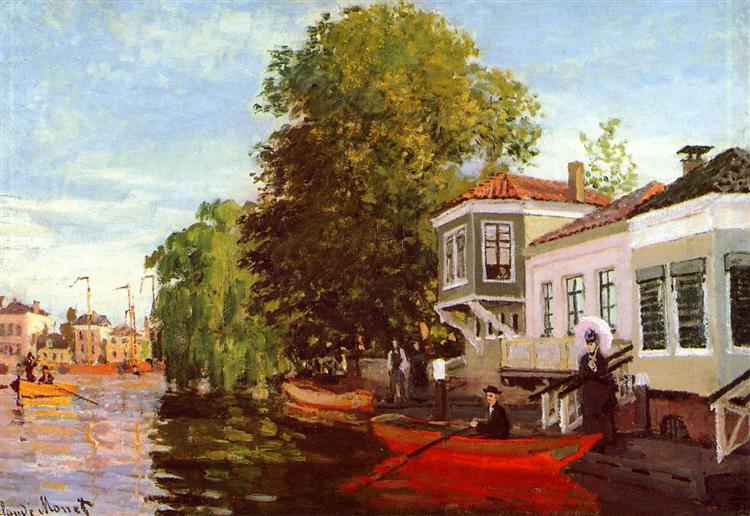Description
The painting "Zaan in Zandam" by Claude Monet, created in 1871, is a work that encapsulates the essence of the impressionist movement, of which Monet is one of the most prominent exponents. This canvas shows an intimate and almost nostalgic landscape, where vibrant colors and light play a fundamental role in the articulation of the atmosphere, and represents one of the first manifestations of Monet's approach to the capture of nature in its various forms and Moments.
In the work, the viewer is received by a view of the Zaan River, which flows calmly through the Dutch rural landscape. The houses on the edge of the water align with peace of mind, reflecting the simplicity and beauty of traditional architecture. Monet uses a colored palette that ranges between the deep blue and the vibrant green, alternating with touches of yellow and terracottes that provide visual interest and warmth. These chromatic elections are not only aesthetic, but also reflect the particular light conditions that the artist captured, revealing his obsession with the influence of the sun and the climate in the perception of the natural environment.
The composition of "Zaan in Zandam" exhibits a careful organization, guiding the eye of the viewer through the work. The river acts as a diagonal line, dividing the canvas in a way that suggests movement and flow, while the presence of a splashed sky by cloud adds a sense of depth. Throughout the shore, you can see the appearance of small details, which include load ships and a series of human figures that, although they do not dominate the composition, provide a sense of scale and life to the scene. These figures, delicately insinuated, are often the key to understanding the social and cultural context of the time of Monet, highlighting the interrelation of man with his natural environment.
The use of fast and loose brushstrokes is one of the distinctive seals of Monet, and in "Zaan in Zandam" it clearly manifests. These techniques allow to create a vibrant and ephemeral atmosphere that captures not only what the eye sees, but also the essence of the moment. The surfaces become almost touch, inviting the observer to experience the life emanating from the scene. Monet is known for its ability to capture light in its variations, a feature that is revealed in this work, where reflexes in water and sunlight interact to create a dynamic game of shadows and luminosity.
This painting is in a broader context within Monet's work, especially in its landscape exploration in the Netherlands. In 1871, Monet made a trip to this region that decisively influenced its production. Often hugging elements of the rural landscape, Monet transformed the everyday into a sublime, using its characteristic style to tell visual stories about time and place. Other works that reflect this same theme and technique often associate with their landscape series and their work in different locations, but "Zaan in Zandam" remains a unique testimony of his exploration of the Dutch landscape.
Thus, "Zaan in Zandam" is not only a visually attractive composition, but also represents the evolution of Monet as an artist and his tireless search for light and nature. It is a reminder of the intrinsic relationship that exists between man and the world that surrounds him, an issue that permeates his work and continues to resonate today, revealing the endurability of impressionism and his ability to capture reality in a way that invites to reflection and emotional connection.
KUADROS ©, a famous paint on your wall.
Hand-made oil painting reproductions, with the quality of professional artists and the distinctive seal of KUADROS ©.
Reproduction service paintings With a guarantee of satisfaction. If you are not completely satisfied with the replica of your painting, we refund your money 100%.

